Sorry Pitfall, Adventure, and Defender. No offense, River Raid, Ms. Pac-Man, Combat, and Asteroids. Yars’ Revenge is the Atari 2600′s finest game and, for my money, one of the best-designed sports videogames of any generation.
Yes, sports game. Let’s break it down.
Yars’ playfield arrangement and basic mechanics are dead simple. The player pilots the Yar, a ‘fly simulator under direct user control’ (as the game’s manual cleverly puts it), in any of eight directions. Your target is the Qotile, a ‘laser-base like object’ on the right hand of the screen protected by a barrier comprised of destructible ‘cells.’ The Qotile only attacks intermittently by transforming into a rotating ‘swirl’ that fires toward the player. Additionally, a small guided missile hunts the Yar relentlessly, following the player wherever they move.
The Yar has three weapons: the energy missile damages the cell barrier, but cannot harm the Qotile or the guided missile; a collision attack that allows the Yar to directly ‘devour’ the barrier; and the Zorlon cannon, earned by eating the barrier or touching the Qotile directly. Only the cannon can destroy the Qotile, but only when a path through the barrier has been cleared.
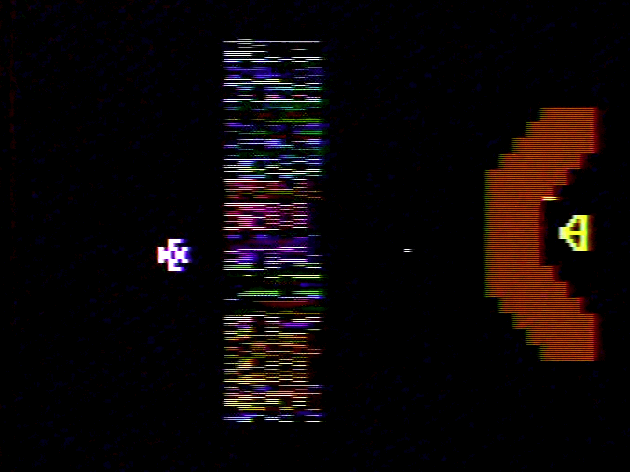
Yars' basic layout (All captures from an Atari 7800)
The playfield is split into four zones. The far left side of the screen is the most defensive (as illustrated above). The Yar can fire missiles in relative safety until the guided missile inevitably gets near. But this is also the slowest tactic—shots must travel further to chip at the barrier and, since the barrier continually scrolls up and down, precision aim is more difficult. Likewise, the Yar must eventually shift into a closer position to either a) evade the guided missile or b) eat some barrier to obtain the Zorlon.
The next area from the left is the neutral zone, the narrow strip of radiant, rainbow data (literally, visual source code) that provides the only safe haven from the guided missile. The neutral zone’s missile immunity is balanced by the Yars’ inability to fire. Likewise, the Yar is still susceptible to swirl attacks.
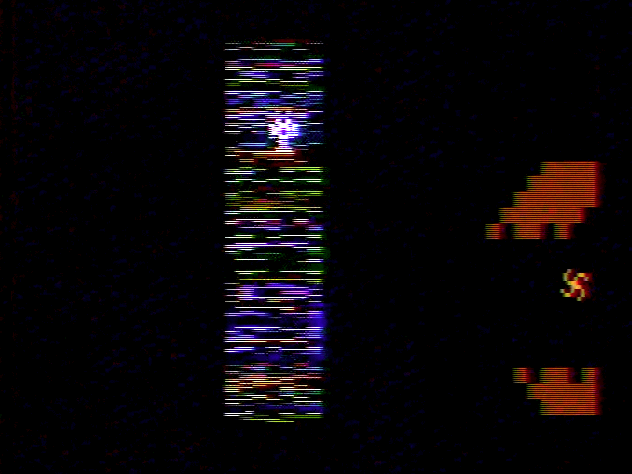
Hiding in the neutral zone as the swirl readies to fire.
Directly beyond the neutral zone is another black band wherein the Yar may fire at close range but not actively devour the barrier.

Firing from the 'third zone.'
The far right hand of the screen is the barrier itself. This is the riskiest position, since the swirl can fire quickly and unpredictably. But it also offers the highest reward, since the Yar can devour the barrier quickly, touch the Qotile directly, and earn the Zorlon cannon. However, devouring the barrier causes the Yar to experience a minor ‘knockback’ that can bounce it into the guided missile if it looms nearby.
The beauty of Yars’ design is the continual balance of risk vs. reward as the player pilots between each of the four zones. Conservative players tend to lay back, chipping away at barrier cells, hiding in the neutral zone when the guided missile gets too close, then repeating until the barrier is clear enough for an easy cannon shot. Aggressive players tend to pressure the barrier directly, risking mobility and safety for rapid cannon acquisition and barrier reduction.
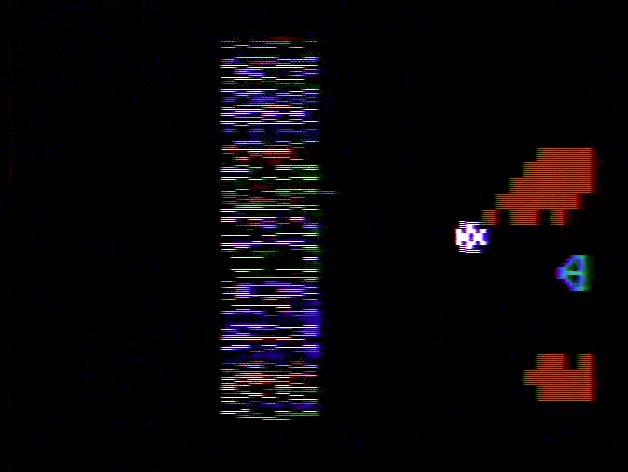
The direct attack.
The weapons have a similar balance. The missiles are the weakest, but also the safest. They only affect the barrier, they’re neutered in the neutral zone, but they fire at any range. The ‘nibble’ attack only works when the player puts the Yar directly at risk but is required to obtain the Zorlon. Finally, the Zorlon is the only weapon that destroys the Qotile, but it must travel from the far left edge of the screen, requiring careful timing to catch the Qotile as it scrolls vertically. More importantly, the Zorlon can kill both Qotile and Yar. And since the cannon tracks the ship prior to firing, the Yar must dodge its own shot in order for it to hit the target. So the further left the Yar is, the safer it is from the Qotile, but the more dangerous the Zorlon becomes; and vice-versa. It’s brilliantly balanced.
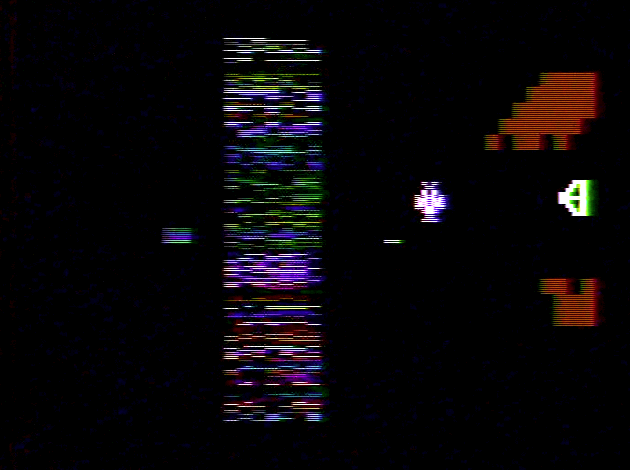
Dodging the Zorlon cannon.
Due to its initial pedigree as a port of arcade title Star Castle and its quirky science fiction aesthetic, Yars appears to be a shooter in the tradition of Space Invaders, Defender, and Asteroids. But this is all set dressing for what is really sport in miniature. Really, Yars is more soccer than shooter.
Imagine soccer (or other goal-based sports like hockey or American football) pared to a few core elements: the goal, the field, the ball, the attacker, and a defender. Yars maps each of these functions to a game element, but also constructs asymmetrical mechanics to make one-on-one sport more interesting. Compared to soccer, the ‘goal’ in Yars (i.e., the Qotile) is much narrower, protected by a material barrier, and moving. Not to mention that the goal has a devastating defense that kills the player. Meanwhile, Yars’ ‘goalie’ (guided missile) prowls the entire field rather than the goal area.
Yars’ progression structure also fits the sports analogy. Like most arcade-inspired videogames from the era, there is no win state. The player competes for score against increasingly difficult versions of the game’s initial state. In other words, as the player progresses, the guided missile moves faster and swirls fire more rapidly and at greater speed. On the game’s more difficult settings, there are other twists. For instance, the Zorlon cannon deflects off the barrier at higher levels and, in ‘Ultimate Yars’ (Level 6 or 7), the Yar must first accumulate enough ‘TRON points’ to grant a cannon shot, then touch the left hand of the screen to make it appear (like checking the ball after scoring in half-court basketball). In Ultimate Yars, shot conservation is higher priority, since earning the cannon takes more time and tricky spatial navigation.
However, unlike other space shooters, rounds are complete once the Yar scores a goal. Space Invaders, Asteroids, and their clones demand total screen clearance, while Defender and its ilk are, appropriately, centered around the defense of the planet’s inhabitants. Sinistar and Phoenix build a kind of mini-narrative around their levels, since there is a culminating boss fight to aim toward. Unsurprisingly, only Star Castle shares Yars’ sport structure, but even the original arcade inspiration has some key differences—for one, the use of thrust and direction rather than direct control to pilot the ship—that couches the game more in the shooter genre.
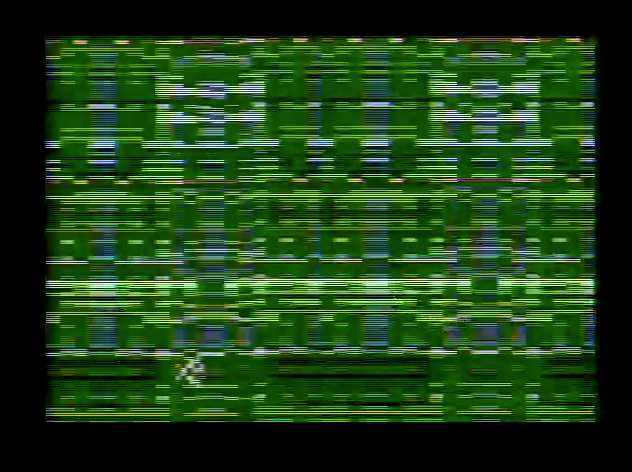
After scoring a 'goal,' the screen floods with beautiful patterns.
As a result, Yar has a distinct finesse to its shots that space shooters lack. Heavy fire clears the barrier, but it doesn’t clear the round. Wild fire, especially in higher levels, is a shortcut to death. Instead, when the Zorlon cannon appears, Yars becomes a penalty kick contest, but one where the player must line up and dodge their shot in hopes of striking a moving goal. This kind of precision offense takes practice. Meanwhile, the game’s defenses are active: the goal can fire and the goalie is constantly hunting the player. Like soccer, the player is constantly juggling the demands of offense and defense, but the bounds between these states are more fluid. In other words, the Yar can (and must) play both simultaneously.

Lining up the Zorlon shot.
Yars’ only fault as sport is its lack of competitive multiplayer, though this makes sense within the bounds of the genre it ostensibly portrays. But this is no fault of the game design—Yars could conceivably support multiplayer. The second player would control both the guided missile and swirl shots. The former would be under active control and the latter would be available only after a timer had elapsed. Players could either compete individually for high scores, or the game could allow attacker/defender swapping between successful goals or Yars’ deaths.
To date, much of the retro renaissance, or at least the fetishizing of bitmapped graphics, has privileged the platformer and RPG above other genres. Sport, unfortunately, has been left uncultivated, likely because it is one of the few genres that appears to directly benefit from better technology. Most Atari-, NES-, and SNES-era sports games are best left in the past because they offer bare representations of familiar sports. Improved graphics, simulation, physics, etc. all help sports videogames better resemble their real-life analogs. The outliers that have stood the test of time—games likeBreakout, Tecmo Bowl, Pong, and NBA Jam—tend to abstract or exaggerate sport in ways that non-digital sports cannot emulate. They are fun in the ways that they differ from their models. And while Madden 2099 and Current Baseball Franchise 2K are fine games, they tend to exclude the non-expert. I haven’t played a football game regularly since Gameday ’97, because I simply don’t understand the minutiae of football well enough to pick the proper plays, teams, or strategies. And I’ve watched football since I was a child, so it’s not that I don’t understand the sport. I simply don’t want my football games to play like Starcraft.
I see a strong potential for abstract, minimal sports like Yars, videogames stripped of the fineries of their real-world counterparts and customized for the strengths and quirks of digital play. There are already some potential contenders in development from indie outfits: Action Button’s TNNS and Videoball, Ramiro Corbetta’s Hokra, and Die Gute Fabrik’s Johann Sebastian Joust all show the potential of minimal sport. But there’s still an untapped reserve of exciting game design in the sports genre, one that’s been waiting thirty years for revival.

















